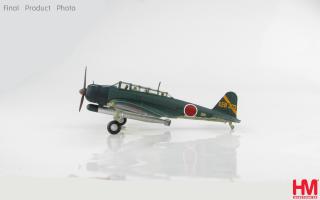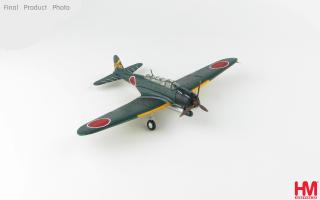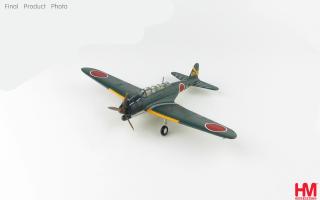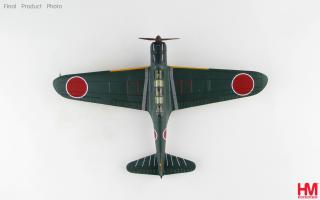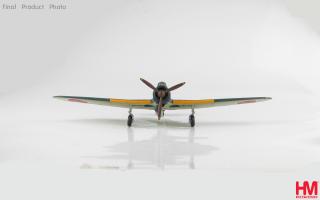Hobby Master Archive
Air Power Propellers 1/72
B5N
B5N2 Kate 931st Naval Flying Group (KEB303), Kushira Air Base, April 1945 (Okinawa air operations)
Specifications Nakajima B5N2 Type 97, model 3 Allied Reporting Name - Kate Crew - 3 X (pilot, commander, rear-gunner/radio operator)
Dimensions Length - 33 ft 9.5 in (10.30 m) Wingspan - 50 ft 11 in (15.52 m) Height - 12 ft 1.6 in (3.70 m)
Weights Empty weight - 5,024 lb (2,279 kg) Loaded weight - 8,380 lb (3,800 kg) Max takeoff weight - 9,040 lb (4,100 kg)
Performance Engine - 1 X Nakajima Sakae 11 radial engine, 750 kW (1,000 hp) Maximum speed - 235 mph (378 km/h, 204 kn) Range - 1,237 mi (1,992 km, 1,075 NM) Service ceiling - 27,100 ft (8,260 m) Rate of climb - 1,283 ft/min (6.5 m/s)
Armament Guns 1 X 7.7 mm Type 92 machine gun ‘Ru’ (Lewis) rear dorsal, hand-loaded drum magazines - 97 rounds.
Bombs 1 X 1,760 lb (800 kg) type 91 torpedo or 1 X 1,760lb (800kg) bomb or 3 X 550 lb (250 kg) bombs or 6 X 293 lb (132 kg) bombs
Hobby Master 1/72 Air Power Series HA2012 B5N2 Kate 931st Naval Flying Group (KEB303), Kushira Air Base, April 1945 (Okinawa air operations)
Die-cast metal.
Fully assembled.
Superb detailing in 1/72 scale.
Pre-painted with pad applied markings.
Comes with crew figures.
Comes with bombs.
Display stand included.
Option to display model with wheels up or down.
Minimum use of plastic.
Very collectable.
The Nakajima B5N1 first flew in January 1937. It was quite unique for a carrier-aircraft with its low mono wing that folded for storage and wide-track inward folding retractable landing gear. The new Kates were far superior to its competition, the TBD Devastator and the Fairey Swordfish however it did have its shortcomings. It was very poorly armed for self defense and required A5M escort protection. Also the crew and fuel tanks had no protection. The B5N1 was replaced by the improved B5N2.
The 931st Japanese Naval Air Group was established on February 1, 1944 and assigned the designation KEB. Kushira Air Base on Okinawa began with the purpose of training pilots, navigators and ground crews. Later during WWII with Japan now losing they resorted to Kamikaze attacks with Kushira becoming the third largest Kamikaze base. In April 1945 B5N2 Kate KEB303 was assigned the task of Anti Submarine Warfare and later assigned to a training unit ended up saving the aircraft from the U.S. assault on Okinawa. 363 Kamikaze pilots from Okinawa were lost.
| Added to archive | 2020-01-25 |
| Last modified | 2020-01-25 |
| Leaflet | 2019-09-01 September 2019 |

